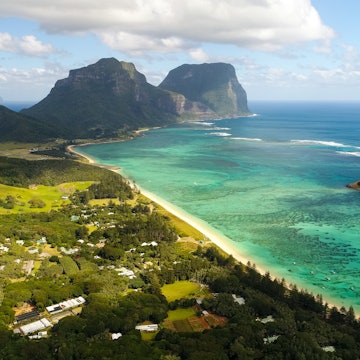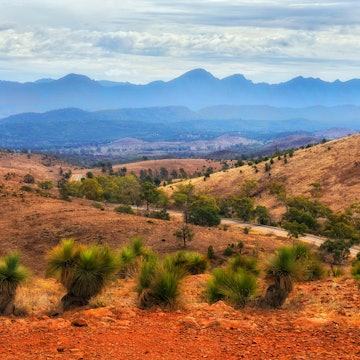
Copy my trip: Sandboarding, festivals and epic sunsets in Western Australia

Apr 4, 2024 • 5 min read

Sandboarding at Lancelin Sand Dunes © Jessica Lockhart
Lonely Planet Destination Editor Jessica Lockhart went to Western Australia for the wildflowers, but was won over by Perth’s immersive Indigenous experiences, stunning scenery and innovative culinary scene. Here, she shares how she spent her week — and why Perth is perfect at any time of year.
Since moving to Australia from Canada in 2015, I’ve dedicated the better part of the last decade to exploring some of the country’s most remote corners – from the rugged peaks of Flinders Island to the Torres Strait Islands. Yet, somehow, I’d never been to Perth/Boorloo. So when Tourism Western Australia invited me for a visit, I jumped at the opportunity.
My visit coincided with Perth’s inaugural EverNow Festival, which celebrates the arrival of Kambarang—one of the six seasons in Indigenous Noongar culture. Typically lasting from October to November, Kambarang is when Perth’s coastlines, wetlands, and forests start to erupt in riotous color. One of the largest displays of blooming wildflowers on Earth, Western Australia has some 12,000 native flower species, 60% of which are endemic.
While I was fortunate to see this incredible display of biodiversity, I also discovered that the thriving coastal city is worth visiting any time of year. It might have been my first trip to Perth, but it certainly won’t be my last.
Where did you stay? What was the vibe?
I checked into Warders Hotel, a boutique hotel directly beside the historic Fremantle Markets. Originally built in 1851 as accommodation for the Fremantle Prison’s Warders (prison guards), the carefully preserved limestone cottages have plush beds, marble bathrooms, contemporary artwork and an aperitivo bar for good measure. Soundproofing makes the rooms an oasis of calm despite being within walking distance from the South Terrace’s restaurants and the ferry to Wadjemup/Rottnest Island. But if I’m being honest, it was the in-room sparkling water on tap that won me over. (It’s really the simple things, folks.)

Favorite activity from the trip?
“Ethereal,” “immersive” and “memorable” might sound like marketing jargon, but they’re the words I keep coming back to when I try to describe the brand-new EverNow Festival.
Held annually in October, it’s an opportunity to engage with First Nations culture in an entirely new way. Rather than overwhelming its attendees with a huge program, EverNow curated its content to feature three hero events: SongCircle (a contemporary Indigenous dance performance with music by Maatakitj), Fire Gardens (a fiery kinetic display of 7,000 giant candles) and Boorna Waanginy: The Trees Speak (a journey through Kings Park, where the trees were used as a canvas for digital light projections).

What was the most under-the-radar activity you enjoyed?
Even if you don’t manage to make it to Perth in time for EverNow Festival, there are countless ways to learn from and engage with the Traditional Custodians of the land. For example, every Saturday at 11am, you can watch Noongar performers outside the WA Museum Boola Bardip for free.
One of my favorite experiences, though, was an art workshop in Kings Park led by Wadjuk man Justin Martin of Djurandi Dreaming. After a short tour of the park, he busted out the paint and canvases. Then, we sat in the grass and got down to business, using linework traditionally found in Aboriginal artwork to paint animals of significance to us. As I sketched out a fish, Martin shared stories of his people, explaining that “moieties” (spirit animals) like the ones we were drawing are given to individuals by Elders based on their characteristics.

What was the most scenic experience of the trip?
The Pinnacles, located within Nambung National Park, is a solid 2.5-hour drive north of Perth, but if you’re going to make a one-day trip from the city, make it this one. Almost alien in nature, these towering limestone structures—believed to be around 30,000 years old—seem to stretch beyond where your sight ends. Add some emus and kangaroos to the scene, and it’s a quintessentially Western Australia moment.
The best time to visit is at sunset when "magic hour" transforms the desert into a landscape of golden hues and long dark shadows before unveiling an unfiltered night sky. Pair it with an astrophotography session (like that offered by Lumineer Adventure Tours), and you’ll walk away with some of the best photos from your trip.
It’s a long day, but seeing wildflowers and sandboarding at the Lancelin Sand Dunes en route helped keep the energy levels high.

Best thing you ate?
Do I have to pick just one thing? Because every single thing that Dale Tilbrook handed me delighted and challenged my tastebuds. The Wardandi Bibbulmun woman is widely considered the “bush tucker queen,” with unparalleled knowledge of Australia’s native foods. She’s even collaborated with other makers in the region, including with nearby Old Young’s Distillery to develop its Six Seasons Gin.
During approachable two-hour tastings in her Swan Valley art gallery, visitors get a chance to sample everything from quandongs (a sour desert fruit with notes of peach) to Geraldton wax (a zesty evergreen and one of WA’s famed wildflowers).
Tasting the raw ingredients also gave me a better appreciation for my six-course degustation at Wildflower. The Perth restaurant changes its tasting menus based on the six Noongar seasons, with foraged native ingredients like warrigal greens, desert lime and line-caught fish taking center stage.

What was the most touristy thing you did?
Bridge climbs might be all the rage (we’re looking at you, Sydney Harbour Bridge), but Perth has its own adrenaline offering: Climbing atop the 60,000-seat Optus Stadium, which was named “the most beautiful stadium in the world” by the prestigious Prix Versailles for Sports.
It’s hard to admire all that beauty, though, when you’re peeing your pants as you dangle on a gangway 140 feet (42 meters) above the ground. I’m told this terrifying ordeal is supposed to be the selling point of the Ozone’s Vertigo experience. Uh, yeah, no thanks.
It turns out this wasn’t my jam (much to the amusement of everyone else on the tour) – but I’ll concede that the incredible views of the city and over the Swan River are unmatched. It also wins bonus points for being fully accessible to wheelchair users and those with limited mobility.
Next time, though? I’ll be packing an extra set of undies.
Jessica Lockhart visited Perth at the invitation of Tourism Western Australia. Lonely Planet does not accept freebies in exchange for positive coverage.













